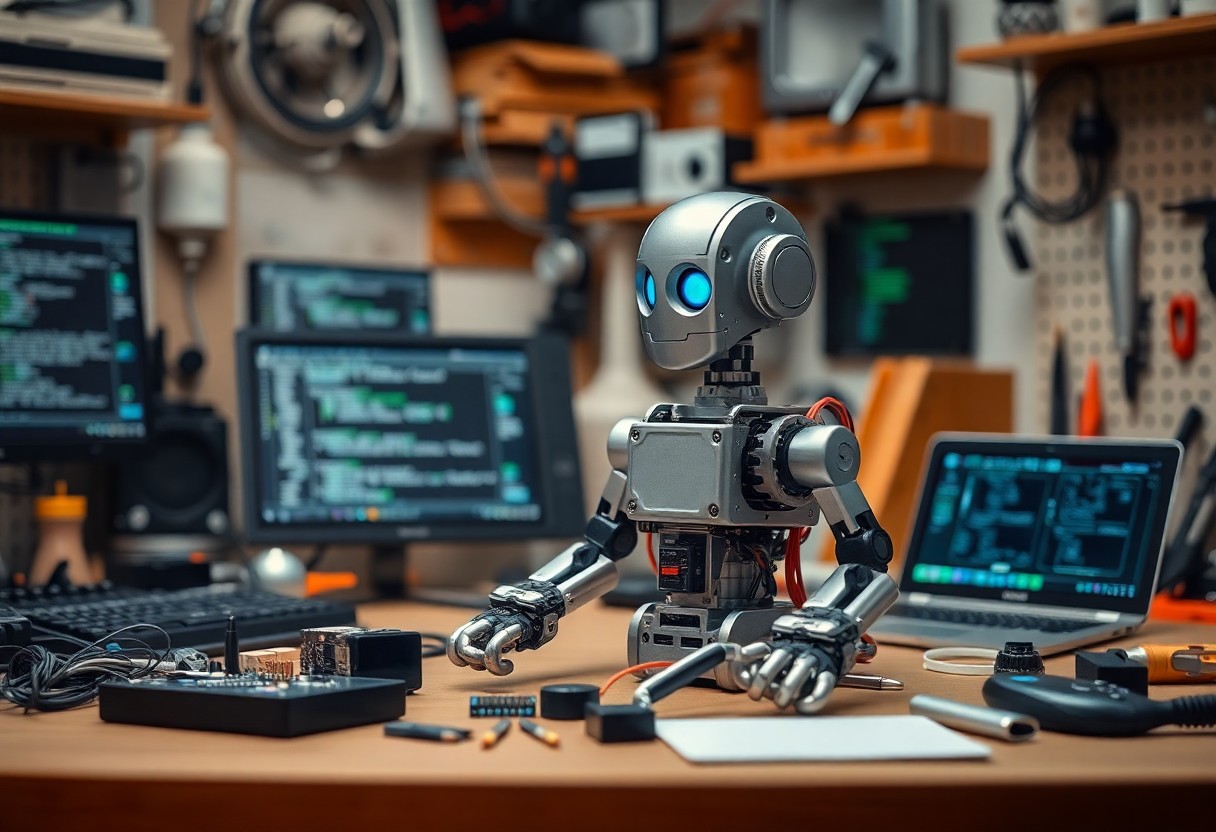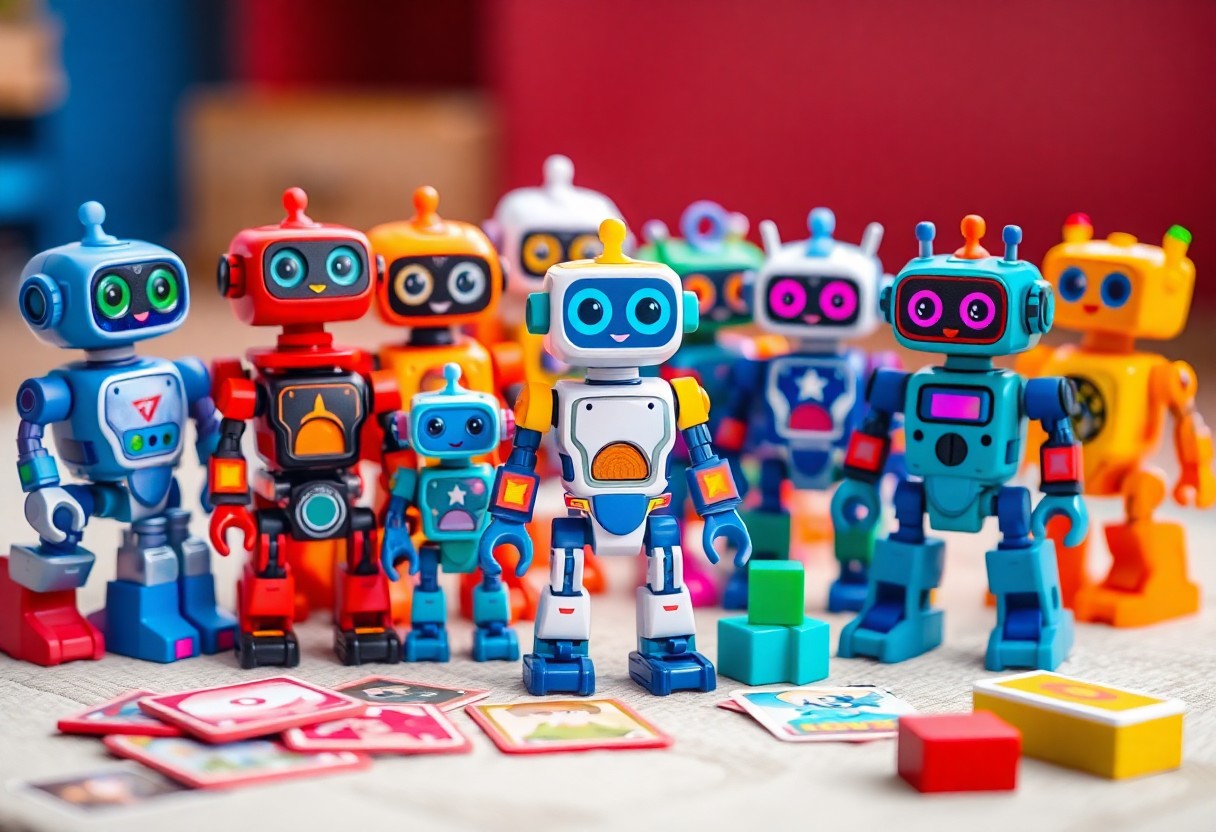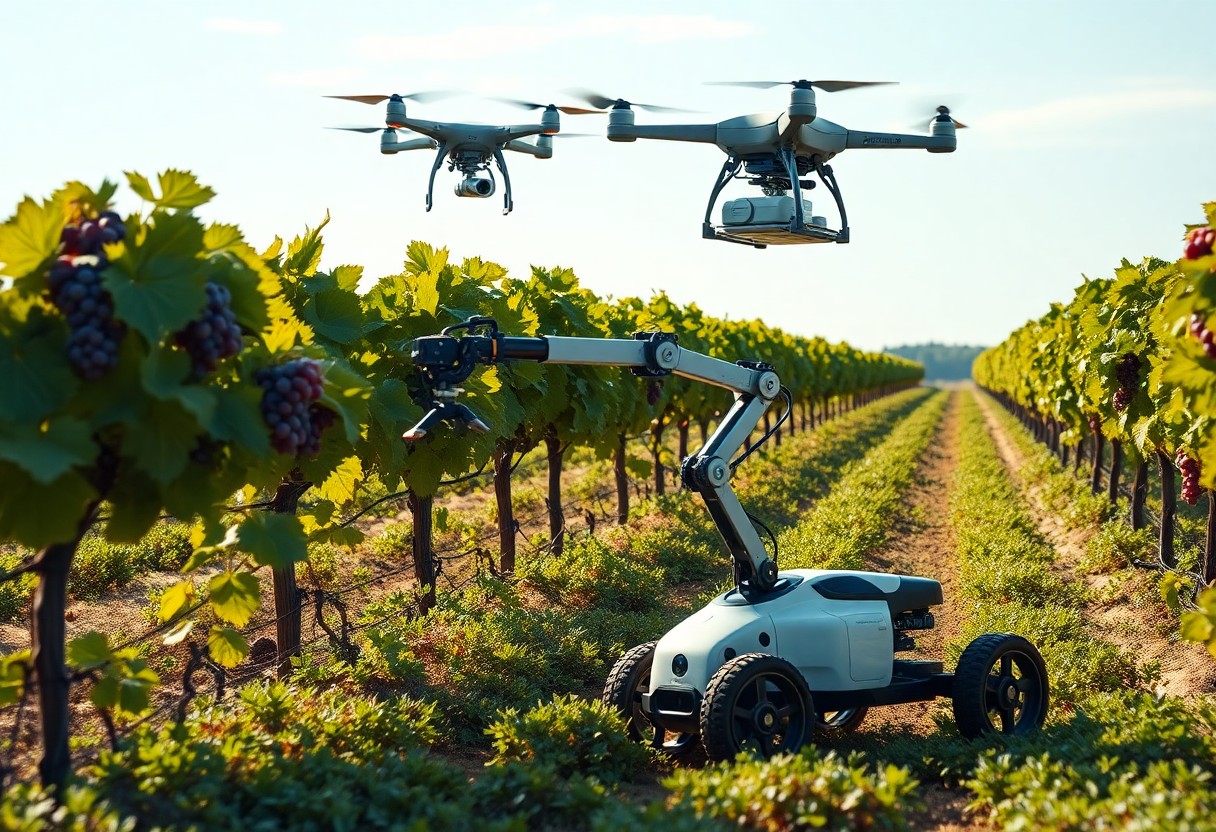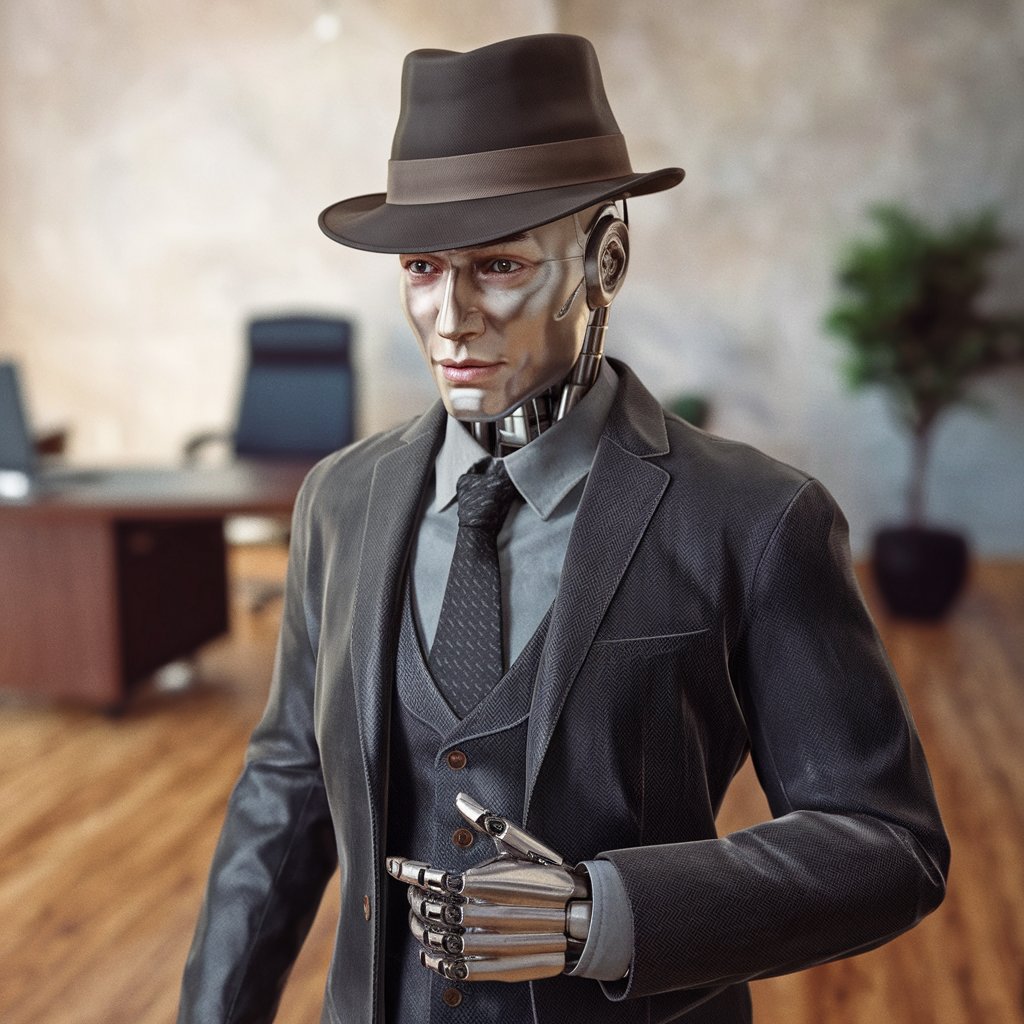Over the last few years, integrating artificial intelligence into DIY robotics has become increasingly accessible to hobbyists and innovators alike. You can enhance your robot’s functionality by equipping it with AI capabilities, enabling it to learn from its environment, make decisions, and interact with users more intuitively. This blog post will guide you step-by-step on how to seamlessly incorporate AI into your DIY project, exploring the tools, methods, and platforms that will empower your creativity and engineering skills. Get ready to transform your robotic creation with the intelligent features it deserves.
Understanding Artificial Intelligence in Robotics
Your journey into integrating AI into your DIY robot begins with a solid understanding of artificial intelligence itself. AI enables machines to mimic human intelligence, allowing them to learn from experience, adapt to new inputs, and perform tasks autonomously. As you explore this evolving field, you’ll find various applications and techniques that can enhance your robotic projects.
Definition and Types of AI
Your understanding of AI starts with its definition and the different types it encompasses. Here’s a breakdown:
| Type of AI | Description |
| Narrow AI | Designed for a specific task, like speech recognition. |
| General AI | Theoretical AI that can perform any intellectual task a human can do. |
| Superintelligent AI | AI that surpasses human intelligence across all fields. |
| Machine Learning | Algorithms that learn from data to improve performance. |
This foundational knowledge will assist you in understanding how to implement AI components effectively in your DIY robot.
Key Concepts in AI Integration
At this stage, integrating AI into your robot requires grasping several key concepts. These concepts include machine learning algorithms, computer vision, and natural language processing, which assist in enabling robots to interpret their environment and make informed decisions.
This understanding opens the door to a myriad of functionalities for your robot, such as enhanced sensory perception, improved decision-making capabilities, and effective interaction with users. As you dive deeper into AI integration, focus on tailoring these concepts to match your specific project needs, ensuring that your robot is both efficient and adaptable.
Components of a DIY Robot
Assuming you want to build a DIY robot, understanding its key components is imperative. Your robot will typically consist of hardware like sensors, motors, and microcontrollers, alongside software for programming and controlling its functions. Each component plays a vital role in defining what your robot can do, so it’s important to choose wisely based on your project goals.
Hardware Requirements
One of the first steps in your DIY robot project is gathering the hardware. You’ll need components such as a microcontroller (like Arduino or Raspberry Pi), motors for movement, sensors for environment detection, a power supply, and a frame to hold everything together. Assessing your project’s needs will help you select the right combination of these parts.
Software Requirements
Any DIY robot requires software to operate, which is often as important as the hardware itself. This usually involves programming languages like Python, C++, or even specialized software platforms specific to your microcontroller. You’ll use this software to write algorithms that dictate the robot’s behavior.
But beyond just choosing a programming language, you should also consider libraries and frameworks that can simplify the coding process. Tools such as ROS (Robot Operating System) or various IDEs (Integrated Development Environments) can offer pre-built functions and streamline communication between your components, allowing you to focus on creating the unique features of your robot.
Choosing the Right AI Framework
One of the first steps in integrating artificial intelligence into your DIY robot is selecting the right AI framework that aligns with your project’s needs. The right framework will provide the necessary tools and libraries to build and train your AI models, enabling your robot to perform tasks more effectively. Consider factors such as compatibility with your hardware, ease of use, and available support when making your choice.
Popular AI Frameworks for Robotics
Above all, some popular AI frameworks for robotics include TensorFlow, PyTorch, and ROS (Robot Operating System). TensorFlow offers extensive support for deep learning, while PyTorch is known for its dynamic computation graph and ease of use. ROS provides a comprehensive ecosystem for robot software development, incorporating various libraries and tools tailored for robotic applications.
Factors to Consider When Choosing
After identifying potential frameworks, you should consider several factors that may affect your decision. These factors include:
- Compatibility with your existing hardware and software.
- The learning curve associated with the framework.
- Community support and available resources.
- Licensing and future scalability of your project.
The framework you choose will influence the overall performance and capabilities of your robot.
Also, the right AI framework can directly impact your robot’s functionality. Evaluate aspects such as:
- Ease of integration with sensors and actuators.
- Performance benchmarks on similar tasks.
- Flexibility in customization for specific applications.
- Community contributions and ongoing updates.
The better you understand these factors, the more effectively your robot can leverage AI technologies.
Programming Your DIY Robot
Once again, the programming phase is where you bring your DIY robot to life. By leveraging programming languages such as Python or C++, you can instruct your robot to perform various tasks effectively. For a detailed approach on integrating AI, check out How To Build Your Own AI-Powered Robot: A Comprehensive …. You’ll learn the ins and outs of coding, setting the stage for advanced functionalities.
Basic Programming Concepts
About your DIY robot, mastering basic programming concepts such as loops, conditionals, and variables is important. These foundational elements allow you to build logic into your robot’s behavior, enabling it to respond dynamically to different stimuli and execute tasks more efficiently.
Implementing AI Algorithms
Concepts related to AI algorithms may include machine learning models and neural networks that enhance your robot’s decision-making abilities. By implementing these algorithms, you give your robot the ability to learn from experiences, thereby improving its performance over time.
Further expanding on implementing AI algorithms, consider that you can use libraries like TensorFlow or PyTorch to streamline the process. These tools offer pre-built models and extensive documentation to support you in creating intelligent systems. As you dive deeper, tailor your robot’s responses based on real-time data, paving the way for more sophisticated behaviors and interactions.
Sensors and Input Devices
For your DIY robot to interact intelligently with its environment, incorporating sensors and input devices is key. These components will enable your robot to gather data and make informed decisions, allowing it to respond effectively to various stimuli. By choosing the right sensors, you can enhance your robot’s capabilities and provide it with a more intuitive understanding of its surroundings.
Types of Sensors for AI Robots
About the variety of sensors available, here’s a brief overview:
| Sensor Type | Function |
| Ultrasonic | Distance measurement |
| IR Sensors | Obstacle detection |
| Temperature | Heat detection |
| Camera | Image processing |
| Microphone | Sound detection |
- Ultrasonic sensors for measuring distance.
- IR sensors for detecting obstacles.
- Temperature sensors for heat detection.
- Cameras for image processing.
- Microphones for sound detection.
Knowing the types of sensors at your disposal will help you select the most suitable ones for your project’s goals.
Integrating Sensors with AI
Along with selecting sensors, integrating them with AI is crucial for creating a responsive robot. This process involves connecting the sensors to your robot’s microcontroller and programming the AI algorithms to interpret the data for decision-making.
With the right integration strategies, you can effectively enhance your robot’s functionality and performance. Utilize libraries and frameworks designed for sensor input, which will simplify the coding process and enable real-time data processing. This approach allows your robot to adaptively learn from its environment and respond to changes, making it more autonomous and functional in various applications.
Testing and Troubleshooting
All your efforts in integrating artificial intelligence into your DIY robot will come together during the testing and troubleshooting phase. This stage is vital to ensure that your robot functions as intended, allowing you to identify potential bugs or areas needing improvement. You’ll want to approach this systematically, evaluating each component to confirm reliable performance and compatibility with the AI functionalities you’ve implemented.
Common Challenges in AI Integration
Before venturing into testing, it’s vital to acknowledge common challenges that might arise during AI integration. Miscommunication between sensors and actuators, unexpected behavior from AI algorithms, or insufficient data for training can hinder your robot’s performance. By identifying these potential pitfalls early on, you can prepare and address them effectively as you progress.
Strategies for Effective Troubleshooting
Above all, approach troubleshooting with a clear strategy. Break down the issues you’re facing into smaller parts, testing each element individually to isolate the problem. Utilize debugging tools and logs to gather insights, and don’t hesitate to revisit your AI models to fine-tune parameters or retrain them if necessary. This methodical approach will save you time and enhance your robot’s overall performance.
Troubleshooting effectively requires patience and a methodical mindset. Begin by checking the integration between your AI components and physical hardware, looking for misconfigurations or faulty connections. Use simple test scenarios to evaluate functionality, and consult online forums or resources for advice if you encounter persistent issues. Documenting your findings can also help you track progress and avoid repeating the same mistakes, leading to a more robust AI integration in your DIY robot.
Final Words
Following this guide, you can effectively integrate artificial intelligence into your DIY robot by selecting the appropriate AI models, employing suitable hardware, and utilizing programming frameworks like Python or ROS. Understanding your project requirements will allow you to customize your robot’s capabilities, whether it be for simple tasks or more complex interactions. By experimenting with sensors and machine learning algorithms, you will enhance your robot’s functionality and bring your creative vision to life. Embrace the learning process, and enjoy the journey of building your intelligent robot!







